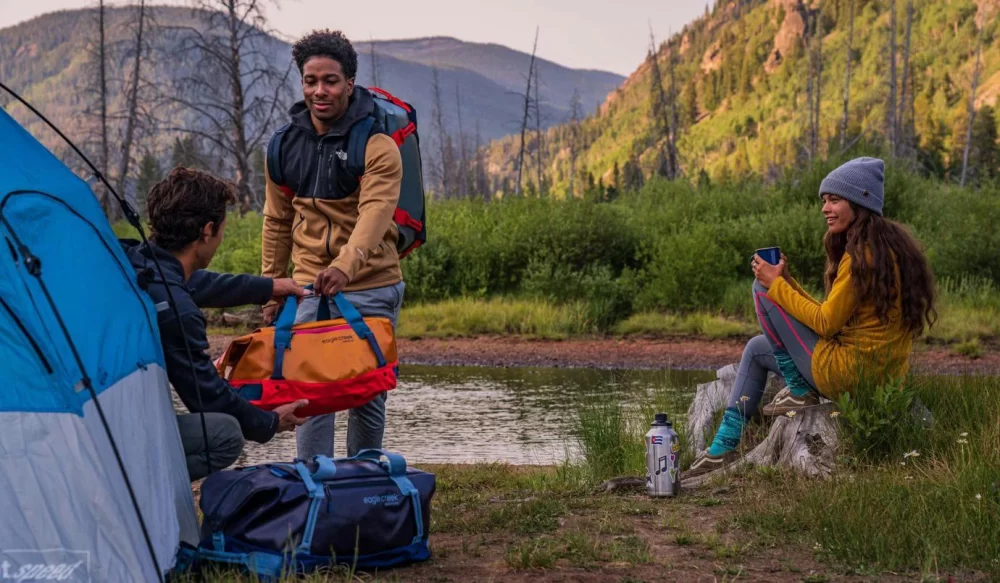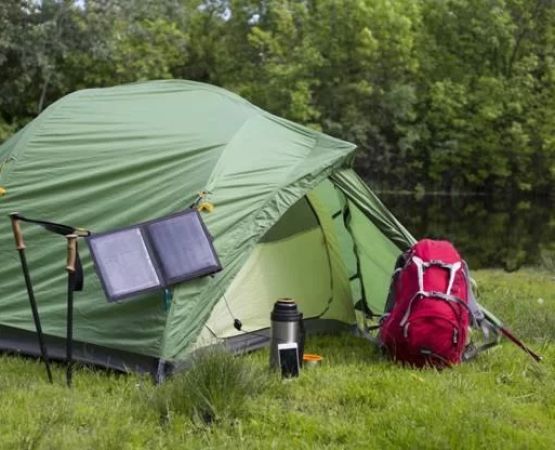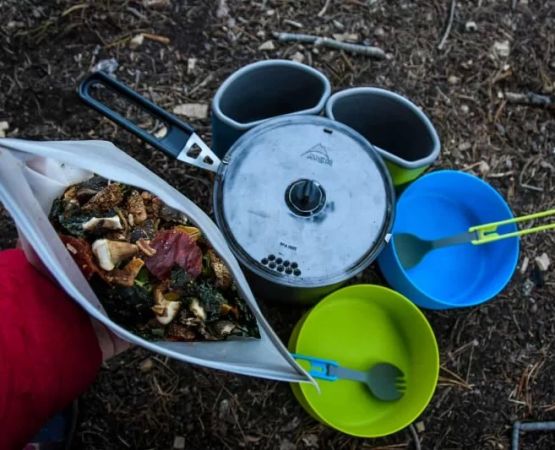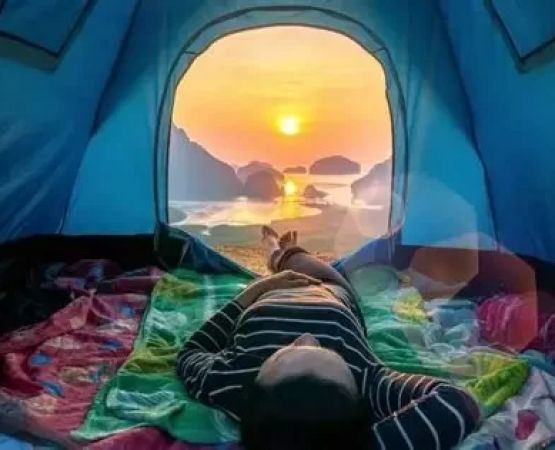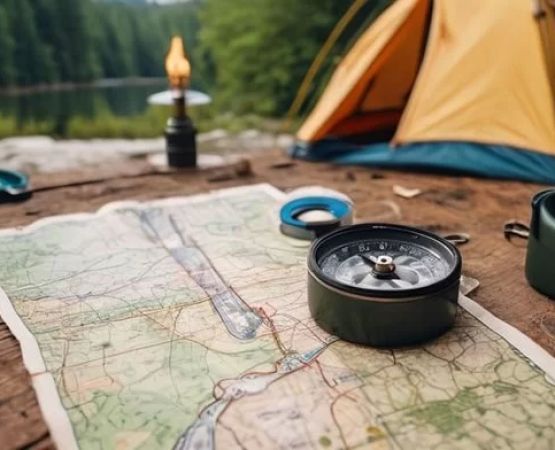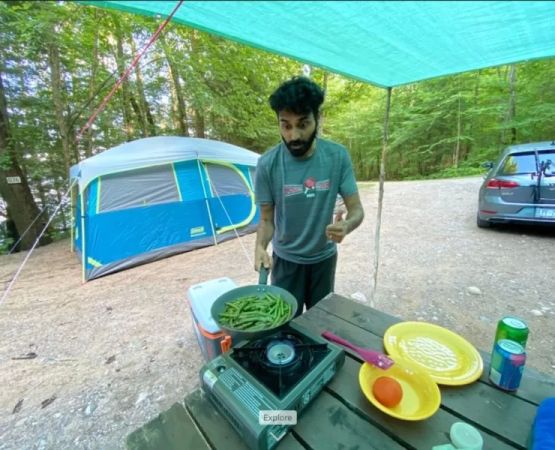Packing for a Long Camping Trip: A Personal Guide to Efficiency
As someone who has spent countless days in the wilderness, I can confidently say that packing for a long camping trip is both an art and a science. Over the years, I’ve learned that how you pack can make or break your experience in the wild. In my early trips, I often found myself carrying unnecessary weight or forgetting key items. Through trial and error, I’ve perfected the art of packing efficiently, and I’m excited to share these strategies with you so that your next adventure is as smooth and enjoyable as possible.
1. The Foundation: Choose the Right Backpack
The first thing you need to think about when packing for a long camping trip is your backpack. This will be your primary mode of transportation for all your gear, so choosing the right one is critical. I always recommend going for a backpack with a capacity of around 50-65 liters for extended trips, as this will give you enough space without being too bulky.
Look for a pack that is lightweight but durable, with adjustable straps and a well-padded hip belt for comfort. A backpack with multiple compartments is essential for organization, as it allows you to separate food, clothing, and gear, making it easier to access items when needed. Trust me, there’s nothing more frustrating than having to dig through your entire pack to find your headlamp in the middle of the night!
2. Gear Essentials: What to Bring and How to Pack
When it comes to the gear itself, one of the most important lessons I’ve learned is to prioritize functionality over quantity. It's easy to get caught up in packing a lot of unnecessary items, but remember that every extra pound counts when you’re hiking long distances. I start by making a list of the essentials, ensuring that each item serves a clear purpose.
Here’s a breakdown of the must-have gear for a long camping trip:
- Shelter: A reliable tent, sleeping bag, and sleeping pad are the foundation of your comfort. For a long trip, I always go with a lightweight, three-season tent that’s easy to set up and pack away. A sleeping bag rated for the expected temperatures and a comfortable sleeping pad to insulate you from the ground are essential for a restful night.
- Cooking Gear: A lightweight stove, cooking pot, and utensils are a must. On longer trips, I prefer a stove that runs on a gas canister, as it’s fast and efficient. I also pack dehydrated meals, which save space and weight while providing the necessary nutrients.
- Clothing: Packing the right clothing can make or break your trip. I always go with moisture-wicking layers that are easy to adjust depending on the weather. Don’t forget extra socks and underwear – trust me, nothing feels better than a fresh pair after a long hike!
- Water Filtration: It’s important to carry a water filter or purification tablets to ensure you have access to clean drinking water. I always pack a small, portable water filter pump or a straw system for easy access to water from nearby streams or lakes.
- First Aid Kit: Accidents happen, and having a well-stocked first aid kit is crucial. I always bring bandages, antiseptic wipes, pain relievers, blister pads, and any personal medications I might need.
3. Packing Tips: Efficiency Is Key
Now that we’ve covered the essentials, it’s time to think about packing efficiently. One of the biggest mistakes I made early on was throwing everything into my backpack without any thought for how I’d use it. Over time, I’ve developed a system that keeps my gear organized and easy to access.
Start by packing heavier items, like your stove, food, and tent, at the bottom of the backpack. This helps maintain a balanced load and prevents unnecessary strain on your back. Lighter, smaller items like clothing, first aid kits, and a map should go at the top or in easily accessible side pockets.
One tip I swear by is to use packing cubes or dry bags. These compact little tools help you organize your gear by category—food in one, clothing in another—and keep everything dry and protected from the elements. I also pack any delicate items, like electronics or a camera, in waterproof bags to keep them safe from water damage.
4. Managing Weight: Carrying Less, Doing More
As I’ve gotten older and wiser, I’ve come to appreciate the importance of weight management when it comes to packing for a long camping trip. It’s tempting to pack “just in case” items, but it’s crucial to be realistic about what you truly need. I’ve learned to cut down on unnecessary gear and focus on multi-purpose items that can serve more than one function.
For example, I used to bring a separate lantern and headlamp. Now, I pack a rechargeable headlamp that can also double as a lantern by attaching it to a hanging strap. I’ve also learned to pack lightweight, compact cookware that can do more than one job—like a pot that can double as a pan or a multitool that includes a knife, scissors, and pliers all in one.
5. Food and Snacks: Keep It Lightweight and Energizing
Food is one of the trickiest aspects of packing for a long camping trip. In the past, I’ve packed heavy cans of beans or large bags of rice, only to regret it after hiking for hours. Over the years, I’ve streamlined my food packing to focus on lightweight, high-energy options that are easy to prepare.
Dehydrated meals are my go-to choice, as they’re compact, easy to cook, and provide all the necessary nutrients. I also bring along high-calorie snacks like trail mix, energy bars, and jerky to keep my energy up throughout the day. A simple rule I follow is to aim for foods that are easy to pack, lightweight, and offer a good balance of protein, fats, and carbohydrates.
6. Organizing for Easy Access
Efficient packing doesn’t just mean fitting everything into your backpack—it also means organizing your gear for easy access while you’re on the trail. One of the biggest challenges I faced on my early trips was rummaging through my backpack for items I needed quickly, especially when I was tired or in a rush.
To combat this, I use a system where I designate specific pockets and compartments for specific items. I keep my map and compass in an outer pocket, where I can easily grab them if I need to reorient myself. My first aid kit goes in a side pocket that’s easy to reach in case of emergencies. Anything I might need quickly, like snacks or a headlamp, I pack in the top or a front compartment.
7. Final Thoughts: Preparing for the Unexpected
Even with all the careful planning and packing, there’s always a chance something will go wrong. That’s why I always try to be prepared for the unexpected by packing extra items, like a backup battery for my phone, a small repair kit for my gear, and a small emergency kit with a whistle, fire starter, and space blanket. It’s better to be over-prepared than to find yourself in a situation where you’re missing something vital.
Lastly, always check your gear before your trip. There’s nothing worse than getting to your campsite only to realize you forgot something important. Trust me, I’ve been there, and it’s never fun to hike back to the trailhead for a forgotten item. A little preparation goes a long way in ensuring a successful and enjoyable trip.

